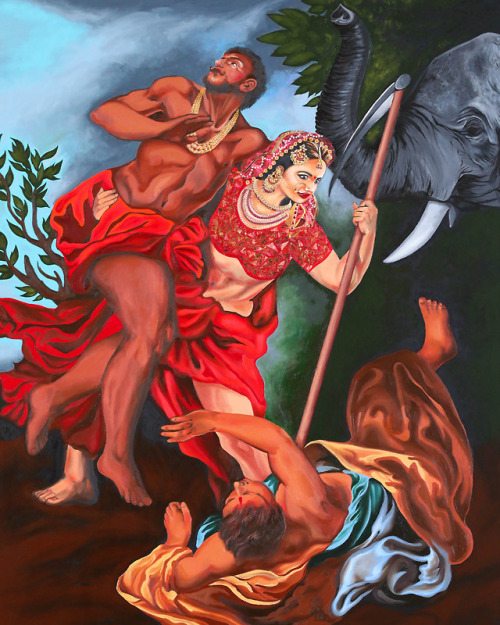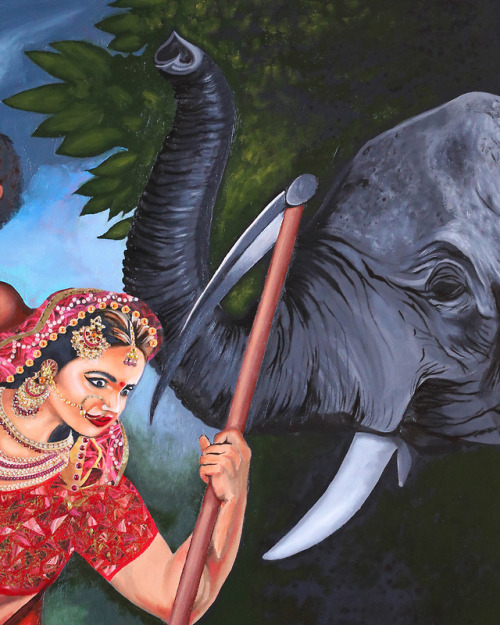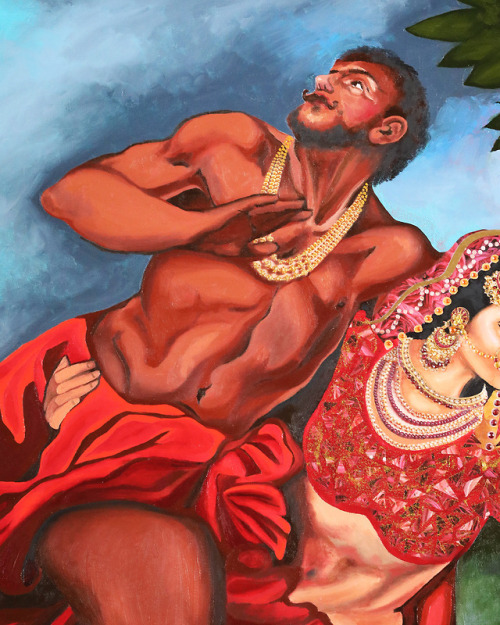#indrani
“Indrani”
Part 8 & the final piece of the ‘Desi Remix’series.
[Remix of Time Saving Truth From Falsehood & Envy by Francois Lemoyne]
Indrani, also known as Shachi, is one of 7 Matrikas (a group of goddesses depicted together as the divine mothers of war and emancipation). She is also the goddess of wrath and jealousy. But most significantly, she is known for developing the concept of “Shakti”, which means power, or the “personification of feminine creative might”. This power manifests through female embodiment, and is believed to be responsible for all creation and change in the universe. She founded the idea that the female companion is the most important “Shakti” of all, and because of this she was seen as independent from all other goddesses.
Additionally, Indrani personified a reversal of traditional gender roles. While most goddesses of this time period derived their names from their husbands (for example: Varuni–wife of Varun), Indrani’s husband, Indra, derived his name from her. He was also occasionally known as “Shahchipati”, meaning one who possesses Shachi, or feminine energy. By definition, her alternative name Shachi states that women are the source of all power. The name Indrani translates to queen of gods.
In early Vedic literature, Indrani was depicted as the female shadow of her husband, which further defied the dominance of male gods, who almost never associated their wives as essential forces during battle. In this depiction I challenge mythological gender roles by taking it a step further. Here we see Indrani saving her husband and standing at the forefront of the fight- a true reversal of the typical “damsel in distress” scenarios of this time period. Since Indrani herself defines power, her strength is not tied to any male characters. She’s strong enough to stand on her own, which is why metaphorically she takes a buff, muscular form. Her Shakti is one that can be neither created nor destroyed, making her role one of a kind in Indian feminism and a pillar for feminine worship.
Instagram | print enquiries: [email protected]
[Please note: The figures in this composition are not made up characters of my imagination. They are historic/ cultural figures, which is why their physical appearance is purely based off literary & scholarly research in order to maintain utmost accuracy to what they looked like in real life. Any alternate interpretations other than what is listed above is completely non-intentional or reflective of my views as an artist.]
Post link
DB with Markus Klinko and Indrani Pal-Chaudhuri - while filming the promo for Valentine’s Day, 2013.
Photo by Jimmy King.
Post link






